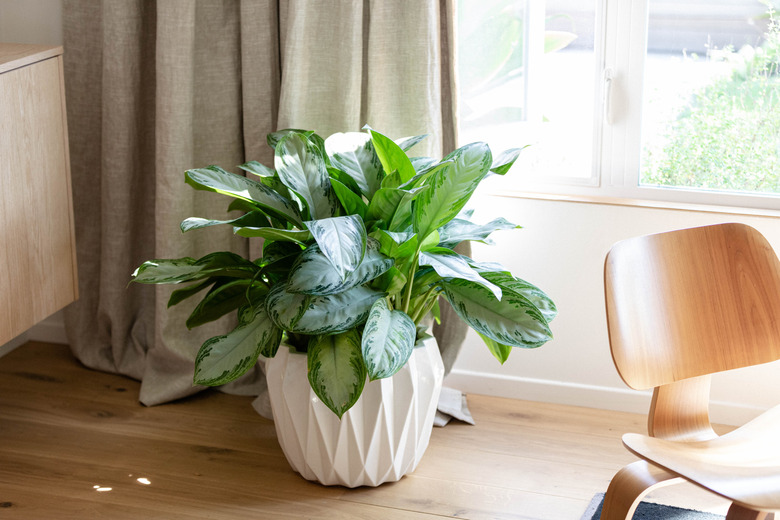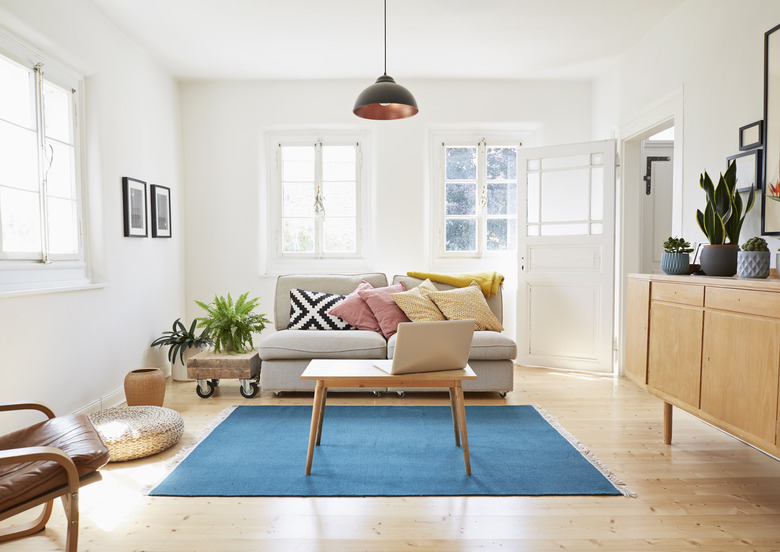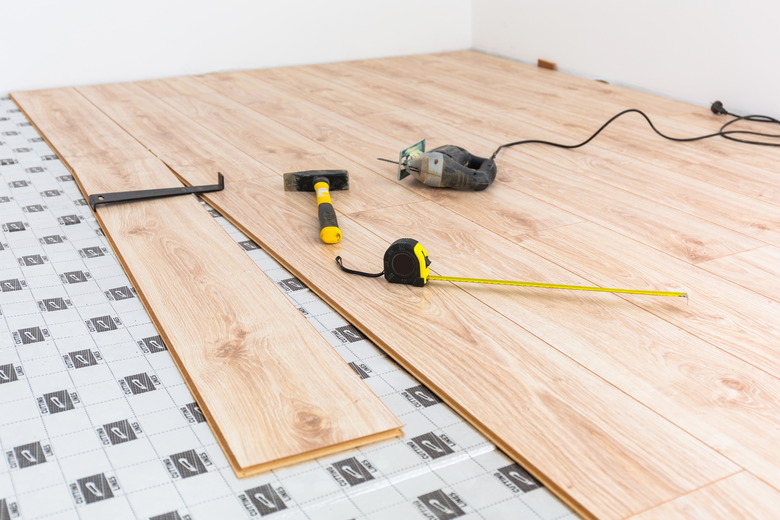Solid Vs. Engineered Hardwood Floors
Who doesn't like solid hardwood flooring? It adds depth, warmth and color to any room, it lasts for 20 to 30 years or more (and can be refinished to last even longer) and it increases the value of your home. In fact, so many people install solid hardwood flooring that some forest resources are strapped, and the price for certain species floats steadily skyward.
Enter engineered hardwood flooring. Originally developed in response to dwindling forest supplies, it has evolved over the years into a product that is in some key ways superior to solid wood. When installed on a floor, engineered hardwood is virtually indistinguishable from solid wood flooring, and it can cost less depending on the quality of the product you buy.
If you're considering installing hardwood flooring in your home, engineered flooring is definitely worth a second look. Unlike real wood, which always has to be nailed or glued down, engineered flooring can be nailed, glued or installed as a floating floor. Depending on where you want to install it, engineered flooring might actually be the most practical choice.
Distinguishing Engineered From Solid Hardwood
Distinguishing Engineered From Solid Hardwood
With solid hardwood flooring, what you see is what you get. Each board is milled from the trunk of a tree, and the grain extends all the way through. Boards are usually 3/4-inches thick, but it's possible to find 5/8- and 1/2-inch ones for installation in low-traffic areas or to fit more comfortably into your budget.
Engineered flooring, on the other hand, is not what it appears to be. Beneath the hardwood veneer on its surface is a core of less-expensive and more abundant softwood or high-density fiberboard. The veneer can be anywhere from 1/32- to 1/4-inch thick, and the boards themselves can be anywhere from 1/4- to 3/4-inches thick.
The fact that engineered flooring consists of layers of wood isn't a disadvantage. The layers often alternate direction, much like layers of plywood, giving engineered flooring boards more stability and more resistance to warping than solid wood. You can install engineered wood in some locations, such as basements or sun porches, where installing solid wood would just be a waste of money.
A Side-by-Side Comparison
A Side-by-Side Comparison
On many counts, solid and engineered flooring are virtually identical. They both offer the lush texture of real hardwood, and although the surface of an engineered board is only a hardwood veneer, it still displays the same characteristics as solid hardwood. Both types of flooring require the same amount of cleaning, and according to Floor Critics, both are available in the same price range — from $3 to $18 per square foot depending on the product.
Solid hardwood has advantages over engineered wood on certain counts, though, and the reverse is also true. When deciding between them, you'll probably want to consider characteristics in which they differ, including installation methods, available styles, stability and life expectation of the floor. Engineered flooring wins on several counts, but that might not matter to you if you're a traditionalist and want the "real thing."
Pros of Engineered Flooring
Pros of Engineered Flooring
Because it's a manufactured product, engineered flooring offers more variety in available surface veneer, installation method and available widths and thicknesses. The hardwood veneer can be:
- White or red oak
- Maple
- Birch
- Hickory
- Cherry
- Rosewood
- Mahogany
A number of exotic species, such as Brazilian oak, Brazilian cherry, Santos mahogany and tigerwood are also available. These species are prohibitively expensive if you purchase them as solid boards. The surface is always prefinished with a durable, scratch-resistant coating that typically is harder and longer-lasting than the site-applied coatings used for traditional solid hardwood installations in which the flooring is sanded and finished after it is nailed down.
Because they consist of layers of wood, engineered boards are resistant to warping caused by moisture or temperature differences. They aren't invulnerable, but they will hold up better on a below-grade subfloor than solid wood, and wide-plank flooring is much less likely to curl at the edges if the boards are engineered. Because engineered flooring can be installed as a floating floor, it's the better choice for a concrete subfloor, which is impossible to nail into.
If you're planning to install a wood floor over a subfloor with radiant heat, you're better off with engineered flooring. Most products are recommended for such installations, whereas only a small number of solid hardwood flooring products are recommended. It's always important to check the manufacturer's recommendations, though, to make sure you don't invalidate the warranty.
Pros of Solid Hardwood Flooring
Pros of Solid Hardwood Flooring
Its lack of a veneer is probably the biggest advantage that solid hardwood flooring has over engineered flooring. Although you can't sand and refinish it an infinite number of times, you can do it more often than you can to engineered flooring, which can be sanded one to three times maximum depending on the veneer thickness. That means that as the floor ages, you can extend its life by sanding it, and you can also change the color to match an updated room design.
While engineered flooring comes prefinished, solid hardwood is sold prefinished or unfinished. The latter gives you more control over the color and the quality of the wear layer. You can darken the color of oak, birch and even mahogany to offset light-colored walls, and if you don't like the plastic feel of polyurethane, you can finish the bare wood with penetrating oils, wax or shellac to give the floor an old-fashioned matte sheen.
If you're looking to increase the value of your home, solid wood is a better choice than engineered. People have a preference for solid wood that may seem illogical, all things considered, but is nonetheless real. Also remember that if your floor is solid wood, you don't have to think twice about refinishing it to get the house ready to sell, provided it has not been sanded down too much in the past.
Options for Installation Method
Options for Installation Method
The traditional way to install hardwood flooring is blind-nailing it to the subfloor, which is a somewhat strenuous job that is not very DIY friendly. If you haven't done it before, you'll probably want to hire a pro to do the installation, which adds from $3 to $7 per square foot to the cost of your new floors. Moreover, nailing isn't possible on concrete subfloors, so you either have to glue the boards, which is risky because of solid wood's tendency to expand and contract, or you have to install a layer of plywood, which changes the floor height.
Engineered flooring also comes in tongue-and-groove boards that you nail down, but if you have to glue them, you can do it with more confidence. Their layered construction makes them less likely to separate or buckle provided you remember to provide the required 1/4-inch expansion gap around the perimeter of the floor. Engineered flooring also comes in snap-together boards that float over the subfloor, though, and floating floors are the most DIY-friendly types of floors to install.
The fact that engineered boards are prefinished is a plus when it comes to the effort required for installation. The installer who lays your unfinished hardwood floor will have to sand the floor after installation and apply a finish, which can add $1.50 to $5 per square foot to your final cost, according to Floor Critics. This is another job you don't want to try yourself unless you've done it before.
Which Flooring Is the Most Eco-Friendly?
Which Flooring Is the Most Eco-Friendly?
If you're concerned about your carbon footprint — and these days, that's becoming increasingly important — you might think at first glance that engineered flooring is the more eco-friendly choice. It uses less hardwood, which is a rapidly disappearing resource, and more softwood, which is abundant. Some products even make use of recycled wood chips.
Consider, however, that much of the wood used for hardwood flooring is taken from trees farmed on plantations, which is necessary because many of the old-growth forests are gone. Also remember that engineered boards contain adhesives that can off-gas and leach into the soil when the flooring is discarded in landfills.
If eco-friendliness tops your list of priorities, consider solid bamboo flooring, which is as durable as many hardwoods despite the fact that it isn't wood at all but a fast-growing grass. It has an attractive grain and comes in a variety of colors. You might also consider engineered cork, a more sustainable product obtained from the bark of cork trees.
Cleaning and Maintenance
Cleaning and Maintenance
Both engineered hardwood and solid hardwood require the same amount of cleaning, which varies according to the amount of foot traffic. You should vacuum frequently with a soft floor attachment to pick up dirt and small particles that could scratch the finish. If deeper cleaning is required, wipe the flooring with a barely damp towel or mop. Do not use wax, oil soap or any type of oily cleaner or polish on hardwood unless the floor has a wax finish. Oils and wax can make it impossible to refresh a floor's finish (by scuffing and recoating it) without sanding off the old finish.
Both types of hardwood flooring are easily damaged by water. Wipe up spills as soon as they occur and wring your mop well when using a cleaning solution. The best cleaners for hardwood floors in general are commercial products formulated specifically for the job, or, to play it safe, just use warm water.


